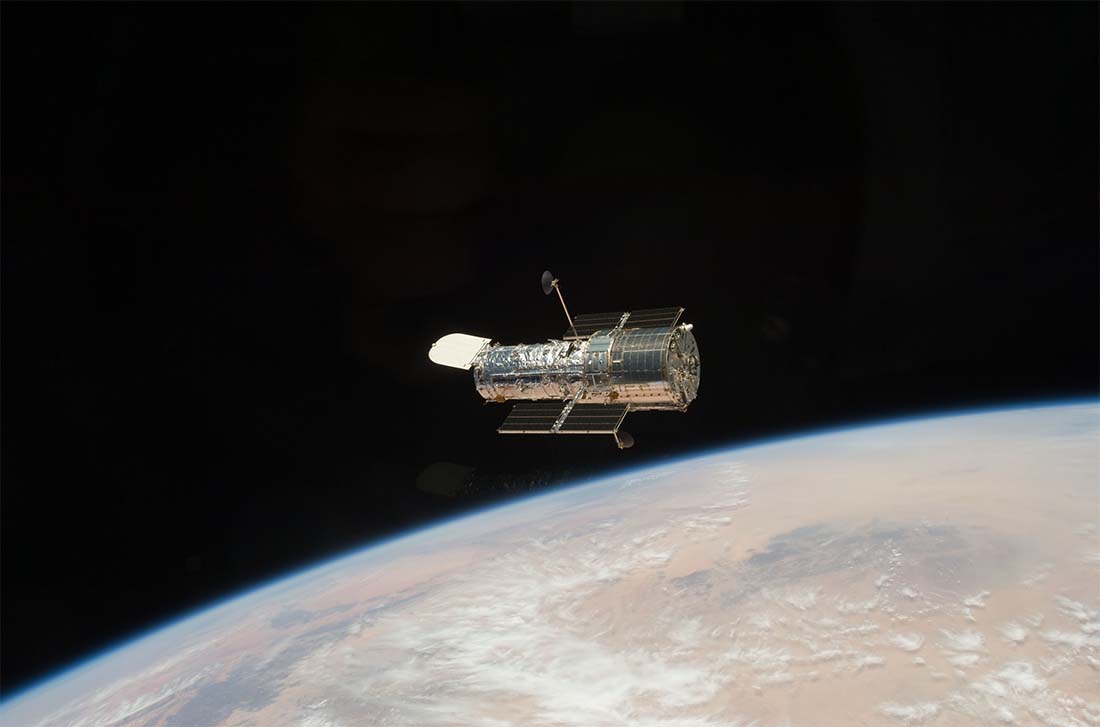
Space-based astronomy is our future (op-ed)
Robust funding of space telescopes can help humanity settle the final frontier.

Dale Skran is chairman of the Executive Committee of the National Space Society. He contributed this article to Space.com's Expert Voices: Op-Ed & Insights.
Recently, there has been considerable anxiety expressed by both the general public and professional astronomers as it becomes apparent that megaconstellations of broadband satellites are becoming a reality in our skies. Some astronomers were surprised to see a "conga line" of SpaceX Starlink satellites crossing the night sky early during their deployment, and radio astronomers are concerned about electromagnetic emissions from these fleets of orbital radio sources. Amateur astronomers also fear that they lack the tools to subtract the interference caused by increasingly numerous satellites.
The National Space Society has long supported both professional and amateur astronomy. Astronomy is the root that leads to space development and settlement. Many astronauts, engineers and other space professionals first got excited about space while looking at the night sky with a small telescope. The NSS supports efforts by companies to decrease the visibility of their satellites and avoid interference with radio astronomy. Additionally, the NSS encourages professional astronomers to make publicly available the image-processing software needed to deal with satellite-caused visual artifacts.
Related: Best telescopes for the money — 2020 reviews and guide
However, it is inevitable that at some point the development and settlement of space expands in scope, and the night sky will be visibly altered (beyond what ground telescopes can compensate for). In time, when solar-power satellites, orbital hotels, fuel depots and zero-gravity factories are added to the megaconstellations in orbit, the night sky will be covered with a "glitter band" of human constructs.
This point may not be reached for many decades, but to the extent humanity successfully extends its reach toward the vast resources of space, it will come. Space advocates need to own the consequences of this, and one of the most significant will be that ground-based astronomy will become increasingly difficult. Fortunately, the true golden age of astronomy lies ahead: when space-based telescopes eclipse those on the ground. The technology that enables the "glitter band" to surround Earth will also allow us to construct an array of in-space instruments exceeding in capability anything possible on the ground.
Currently, ultraviolet, infrared, X-ray and gamma-ray astronomy is only possible in space, since these wavelengths do not penetrate Earth's atmosphere very well. The Hubble Space Telescope demonstrated that a large telescope in space could be operated and repaired over many years. In order to bring about the future of space-based astronomy, the NSS calls for the following:
Get the Space.com Newsletter
Breaking space news, the latest updates on rocket launches, skywatching events and more!
- The continued support by the U.S. government of large, cutting-edge telescopes in space, with an emphasis on in-space assembly, repairability, and upgradability.
- The development of mass-produced, smaller, yet highly capable space-based telescopes for optical wavelengths to replace ground-based instruments.
- The full exploitation of space to create large interferometers at various wavelengths.
- The construction — by an international consortium — of a radio telescope on the far side of the moon, where it will be shielded from Earthly radio emissions.
- And the launch of small (cubesat-sized), networked telescopes that amateur astronomers can use to scan the skies.
If we take these steps now, we will reap the scientific benefits of a new generation of more capable telescopes while preparing for a future in which Earth-based astronomy becomes increasingly difficult. As our usage of space resources grows, the cost of space-based telescopes will decline, and eventually become more cost-effective. Additionally, space-based telescopes will not disrupt areas of natural beauty on the Earth, or conflict with sacred sites such as Mauna Kea in Hawaii.
The NSS urges that these programs be funded so astronomers can transition from Earth-based to space-based telescopes with a minimum of career disruption. Although this may seem counter-intuitive, a vigorous and well-funded program of space-based astronomy is a critical foundation of future space development and settlement.
To learn more about the National Space Society, you can visit the non-profit's website here.
- Some assembly required: giant next-generation space telescopes could be built off Earth
- Giant space telescopes of the future (infographic)
- Satellite megaconstellations will mar astronomers' view of heavens, study finds
Follow all of the Expert Voices issues and debates — and become part of the discussion — on Facebook and Twitter. The views expressed are those of the author and do not necessarily reflect the views of the publisher.
Join our Space Forums to keep talking space on the latest missions, night sky and more! And if you have a news tip, correction or comment, let us know at: community@space.com.

Dale Skran worked 17 years with Bell Labs (AT&T, Lucent Technologies) and continued his career at several companies including Ascend Communications (VP of Enterprise Engineering), Sonus Networks (Director of Engineering), and CMWare (Founder, CEO, COO, and VP of Engineering). He was also a negotiator/ manager (Rapporteur) at the UN (International Telecommunication Union) where he led the development of international Internet standards for video conferencing and voice services (VoIP).









